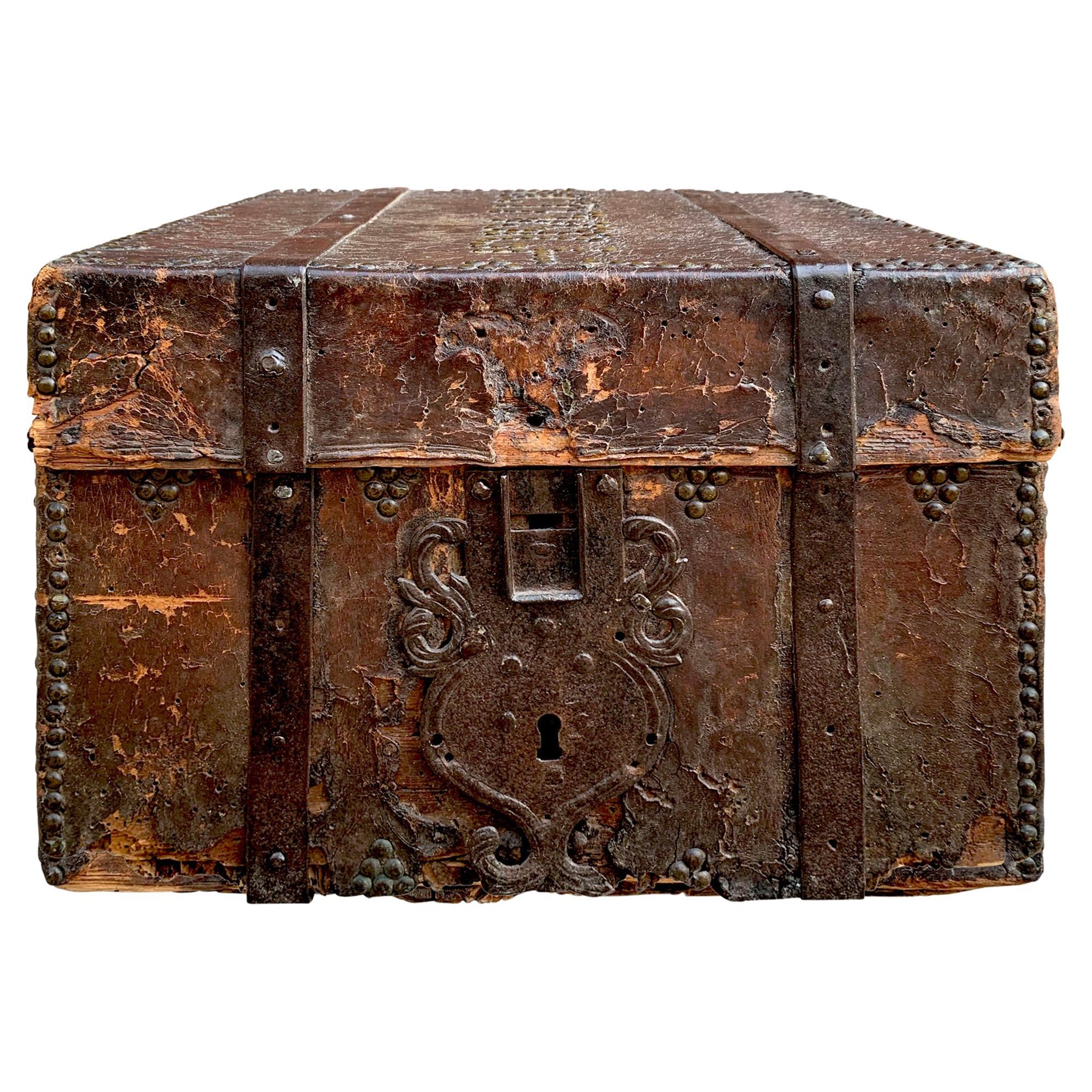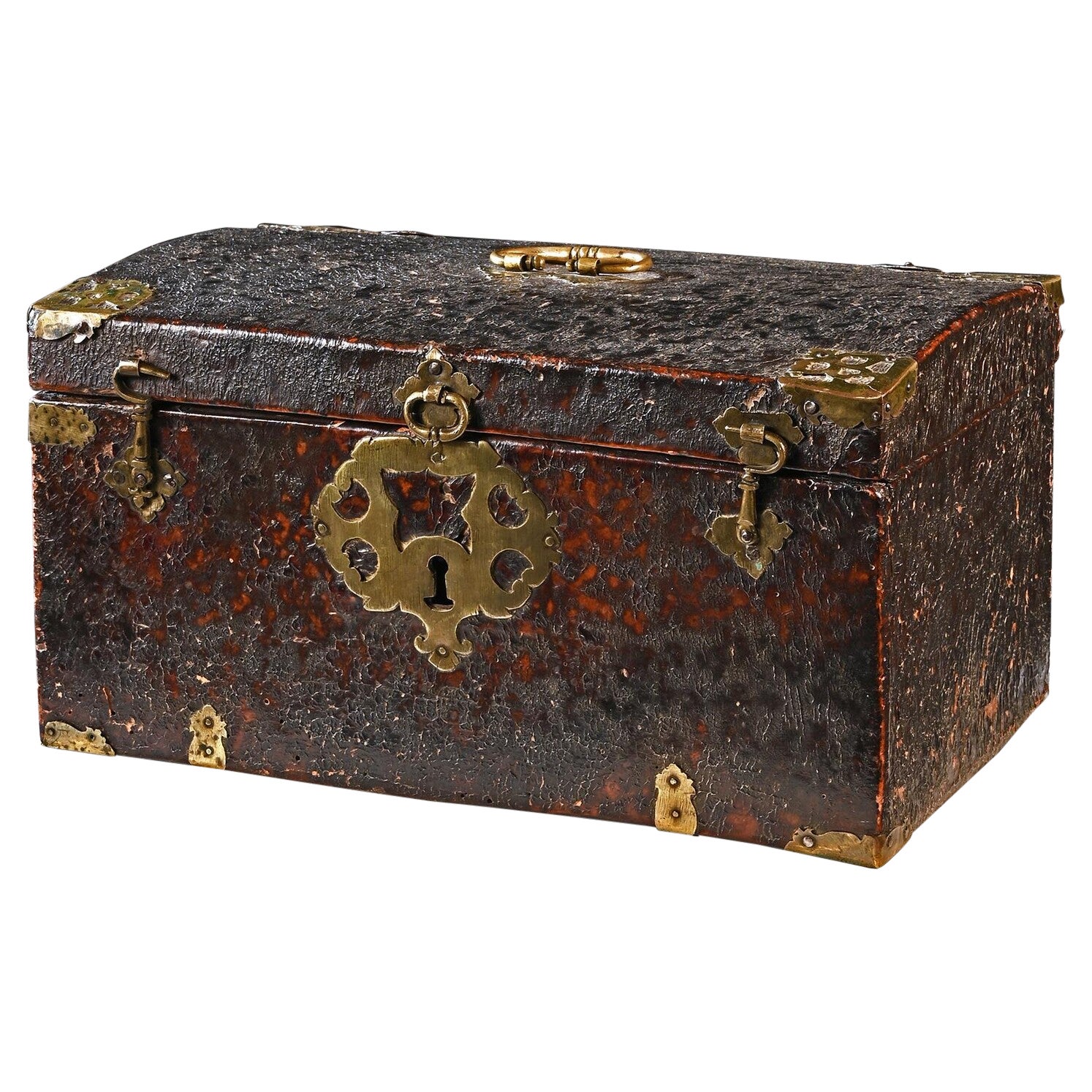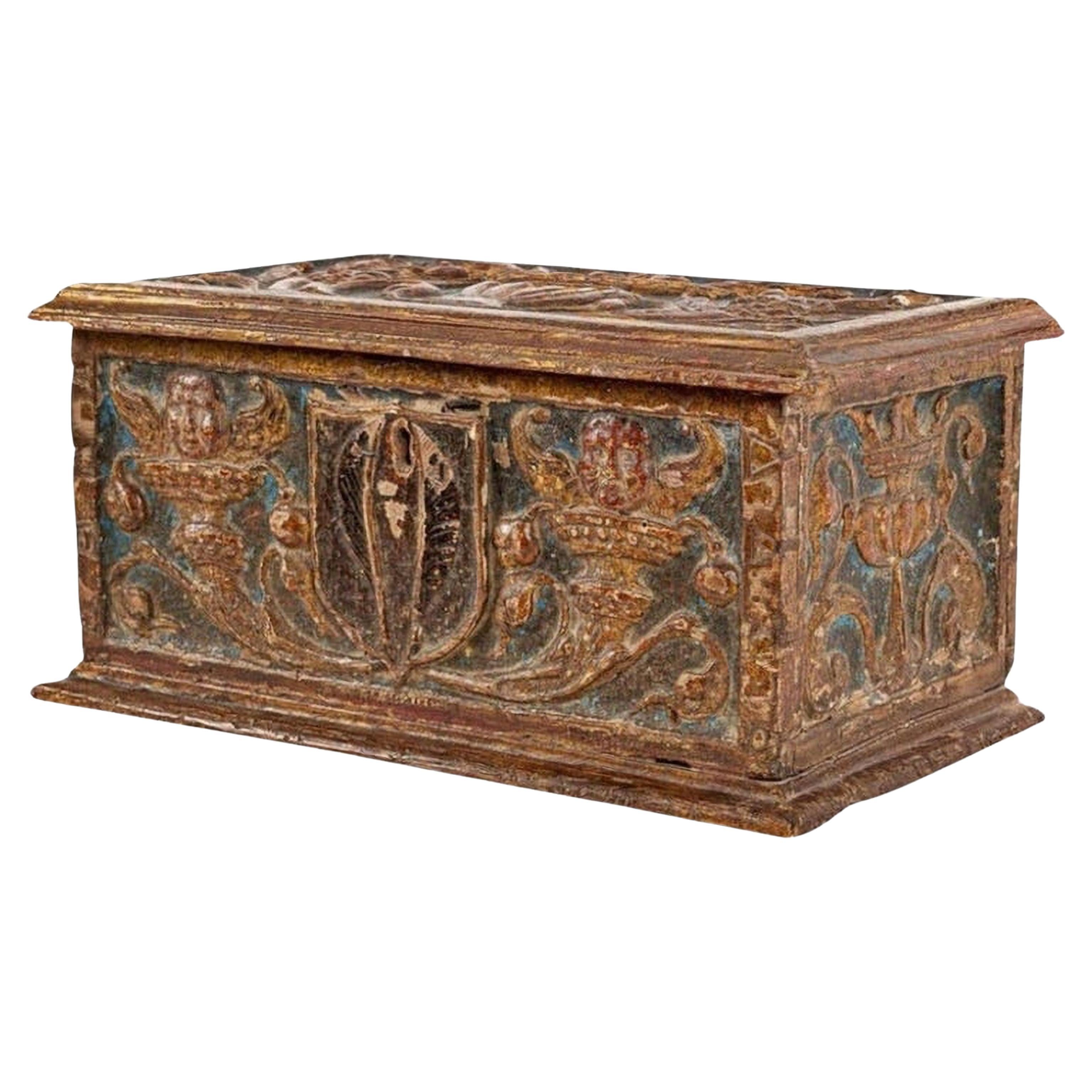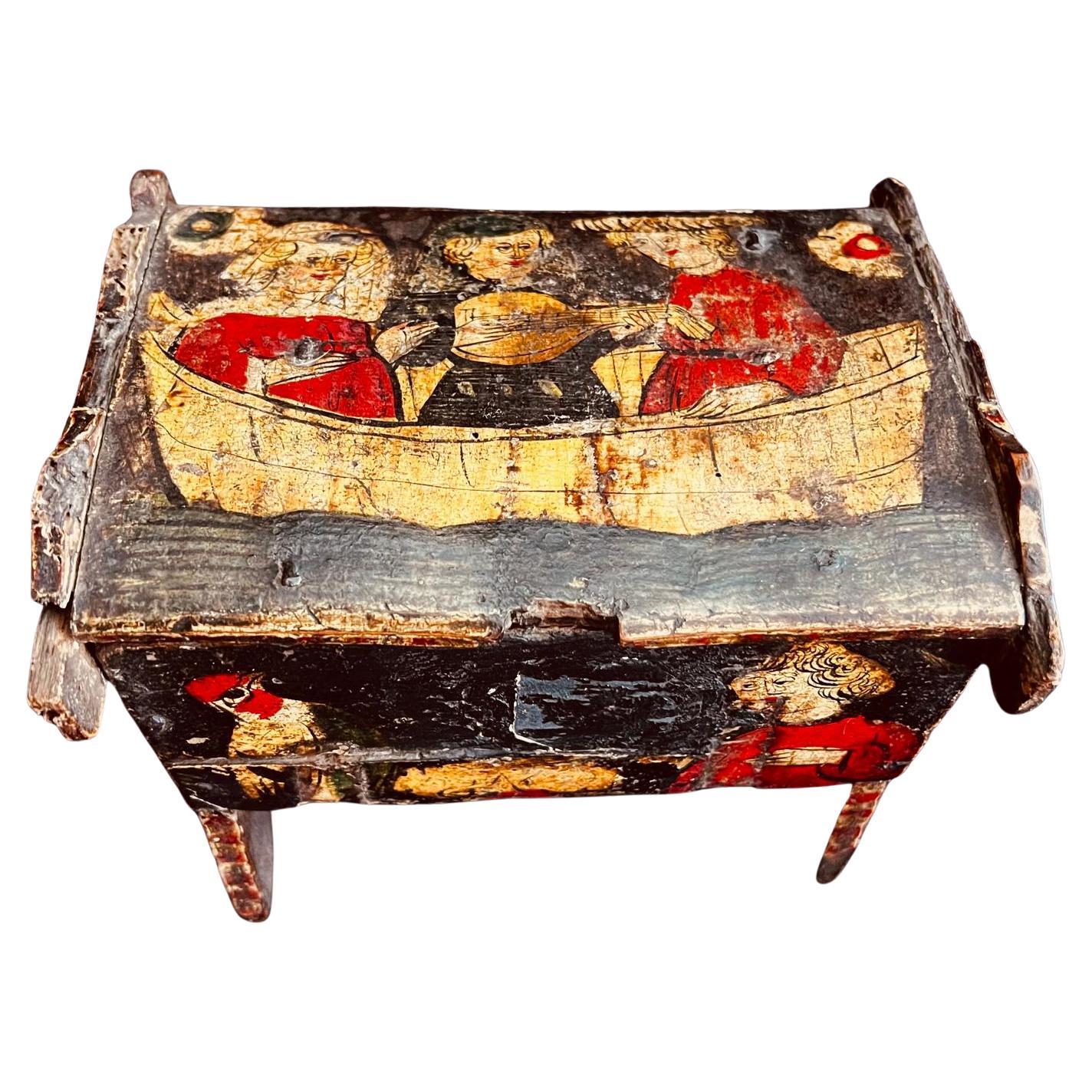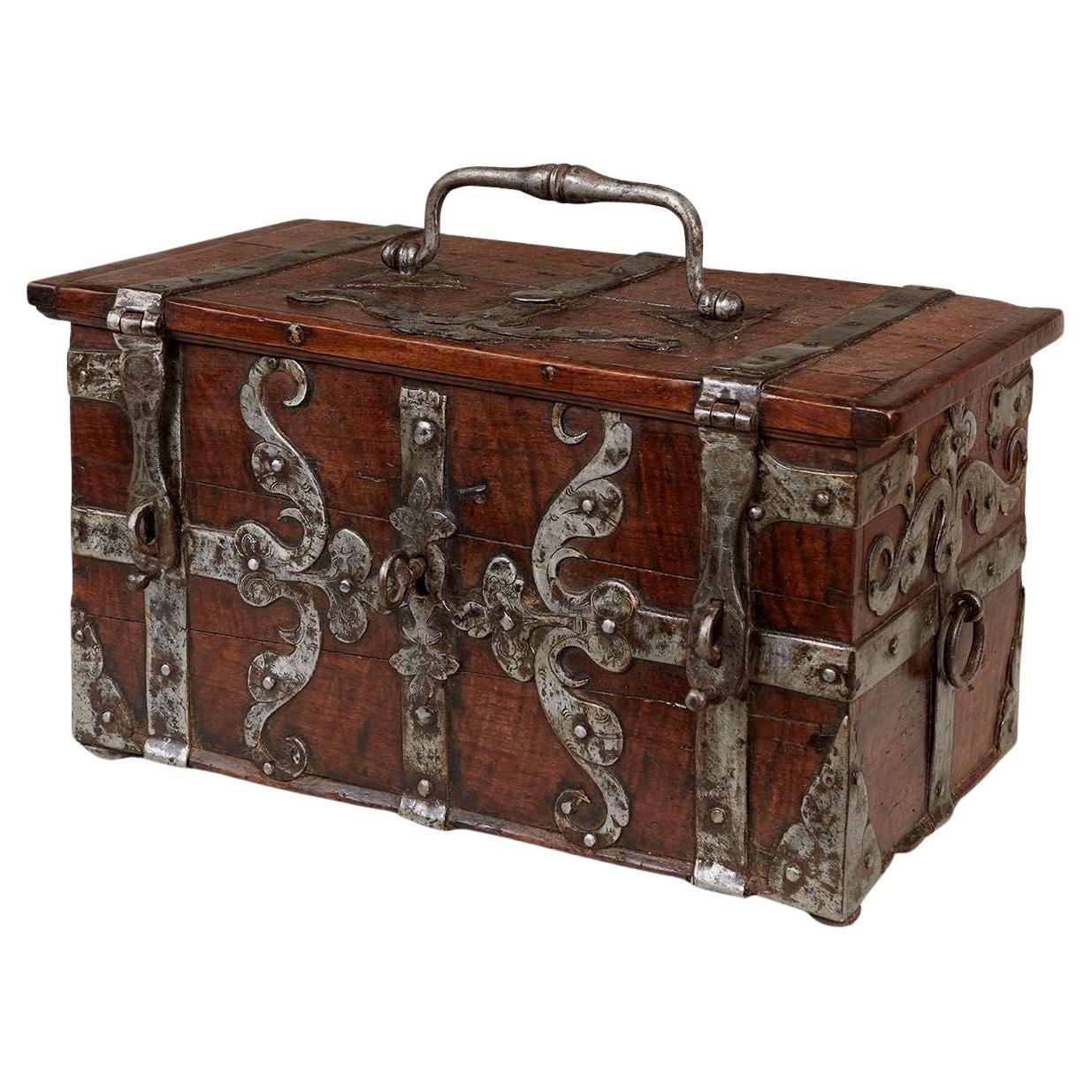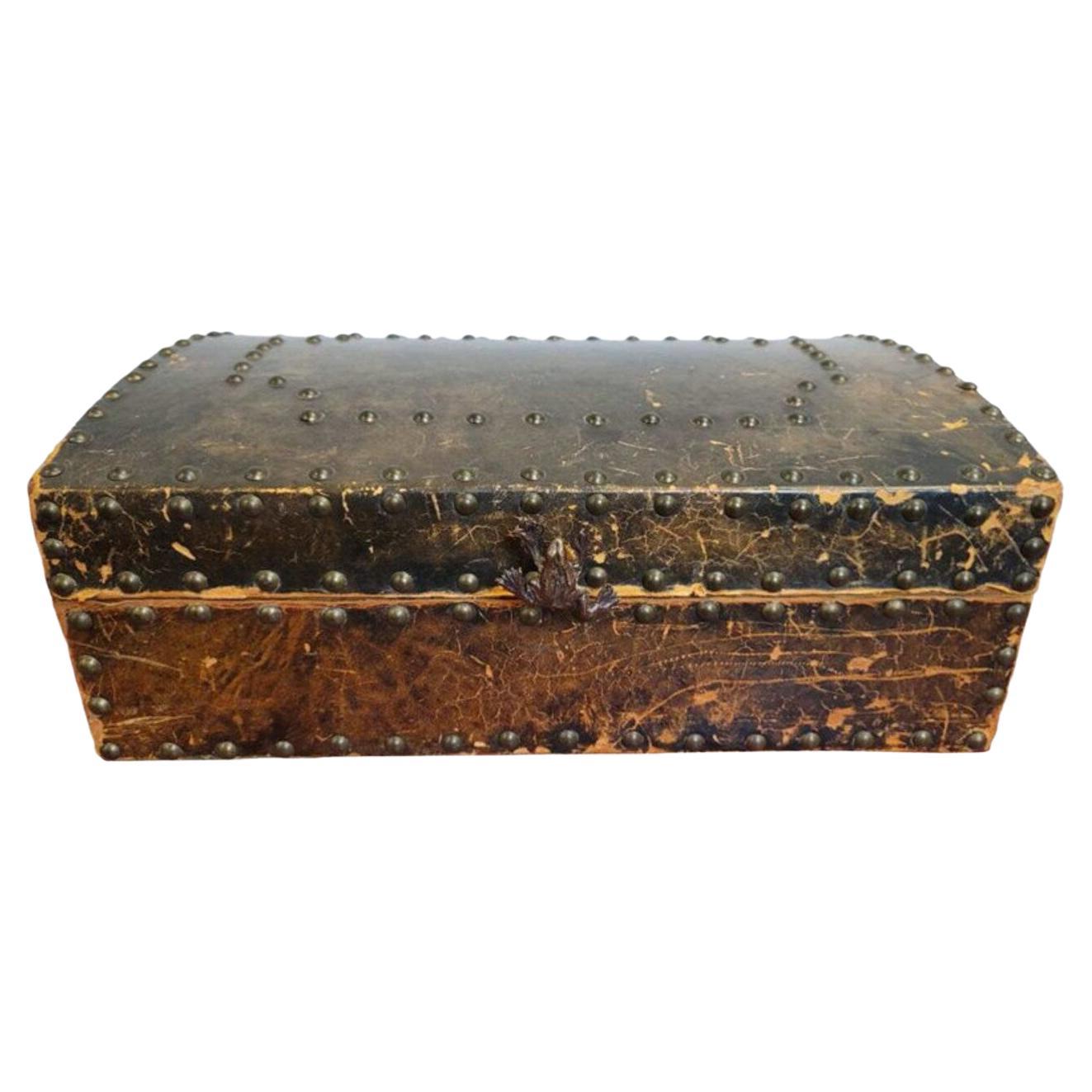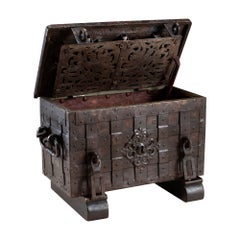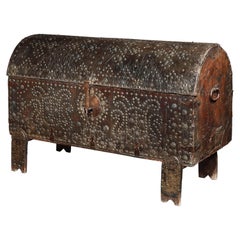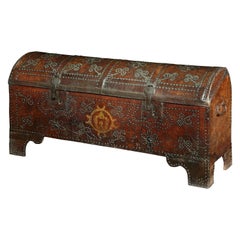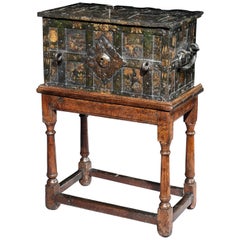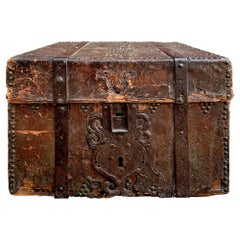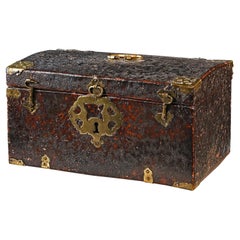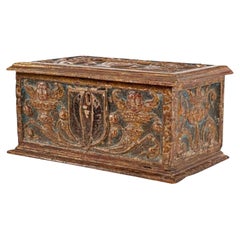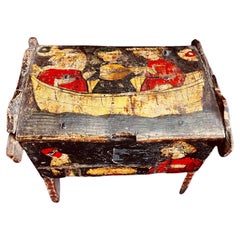Items Similar to Casket, German, Baroque, painted, Vivien Leigh, Laurence Olivier, Notley Priory
Want more images or videos?
Request additional images or videos from the seller
1 of 21
Casket, German, Baroque, painted, Vivien Leigh, Laurence Olivier, Notley Priory
$9,583.48
£7,000
€8,217.60
CA$13,445.54
A$14,772.79
CHF 7,618.23
MX$176,993.01
NOK 96,728.13
SEK 90,775.42
DKK 61,373.93
About the Item
This charming and unusual casket injects a romantic atmosphere into any interior. It has survived in impeccable condition with acceptable wear to the painted surface which signifies its age and use. It is a conversation piece, a piece of acting history, bought by Vivien Leigh and Laurence Olivier for their home. They were the King and Queen of stage and screen and their romance is an iconic love story. She was the raven-haired, green-eyed, feline temptress who won the most coveted female role in cinema history as the wilful Southern minx, Scarlett O’Hara, in the most celebrated film ever made, Gone With The Wind. He was the impossibly handsome, dark, and brooding Heathcliff in Wuthering Heights, acclaimed as the greatest actor of the 20th century and the youngest to be knighted. It is not known when they purchased this casket, whether together or as a gift for the other, but its romantic charm would have harmonised with the romantic interiors they created at Notley Abbey.
The triangular lid painted on both sides with a large centralised poppy surrounded by stylised berries and floral sprays with red and white peonies. The front and back painted with a stylised tulip with two large red peonies either side and berries. The sides painted with stylised red and white peonies and berries. The casket retains its original iron strapwork decoration on the lid, front, back and sides. The original lock and later key. The interior retains a fragment of the original lining paper, white with gold squares and circles. The paintwork has some wear on the front and sides of the lid where it has been handled over time and developed a patina.
Notley Abbey:
“Of all the houses I’ve lived in over the years, Notley is my favourite. It was absolutely enchanting, and it enchanted me. At Notley I had an affair with the past. For me it had mesmeric power; I could easily drown in its atmosphere. I could not leave it alone, I was a child lost in its history. Perhaps I loved it too much, if that is possible.” Laurence Olivier
‘Oh the hundreds of times my beloved Larry and I have wandered here in wonder and grateful amazement at the beauty all around us.’ Vivien Leigh
Notley Abbey, named after the local nut trees, was an Augustinian abbey founded in the 12th century near Long Crendon, Buckinghamshire which became one of the largest and richest Augustinian monasteries in the Oxford region. The abbey was visited by Henry IV, Henry V and Henry VIII who dissolved it in 1538. By 1937 only the abbot's house and portions of the western and southern claustral buildings were relatively intact and the Abbey was excavated.
In 1944 Laurence Olivier and Vivien Leigh purchased Notley Abbey and the L-shaped, two-storied Abbots Residence became their marital home until 1960. They transformed Notley into a romantic haven hosting some of the greatest parties attended by the celebrities of the day such as Douglas Fairbanks Jr, John Gielgud and Peter Finch. The Oliviers also left an imprint on the garden with their planting schemes and Olivier planted a romantic nut tree walk at Notley, which survives today, as a gift for his beautiful wife.
‘An attitude circulated that these weekend parties were in some way exclusive gatherings of a small and somewhat superior theatrical clique. It was never like that. Vivien adored her home and she was never happier than when she could share the peace and beauty of Notley….I think Larry would have appreciated their being on their own a little more. But Vivien was one of those people who must have people around her. They were not wild parties nor in any way particularly unusual–except possibly that they gave us a chance to relax and be ourselves far removed from the artificiality that surrounds much of the life of the theatre… Larry, I remember, spent his time enjoying his hobby of tree pruning. I spent one glorious afternoon employed on nothing more glamourous that cleaning out a stretch of clogged up river.’
Peter Finch, Gwen Robyns, Light of a Star
Vivien was devasted when, due to their impending divorce, Notley had to be sold in 1960 and describes her sadness at the thought of having to sell Notley in 1960.
Notley - Feb 19 1960
‘It seems as if Notley is sold. I can hardly write the words. A Canadian couple saw it some weeks ago, made an immediate and perfectly good offer and want to move in at the end of April. It doesn’t seem possible, does it? Of course it is looking particularly beautiful. We have had the most glorious crisp and dazzling winter days…I walk from place to precious place and gaze at the beloved views with tears pouring down my face. What memories for all one’s life—such unbelievable rare happiness, sweetness and quietude there has been here. I don’t forget the other times too, but they seem to me outweighed by blissful togetherness. Dear God it is a heartache…the fact that we have known for some time now that it would have to go doesn’t seem to help in the least.It is fifteen years—a great part of one’s life. Shall you ever forget our walk on that misty moonlit night? Oh the hundreds of times my beloved Larry and I have wandered here in wonder and grateful amazement at the beauty all around us—the feeling that we were a little responsible for creating it too made it all so doubly dear. It is hard to imagine life without such an oasis. To think that YOU will not see it again seems quite untrue. If you have felt hurt at my not writing you now know the reason why—for what such upheavals shake one’s life in every direction it is difficult to assemble one’s thoughts and communicate freely…Do not blame Larry for not writing, he has had a tremendous amount to do and I think, is feeling, in his own way, as uncertain and unhappy.
Tarquin Olivier, My Father Laurence Olivier:
Provenance: Deceased estate of Suzanne Farrington (only child Vivien Leigh & Leigh Holman), Vivien Leigh, Notley Abbey, Most likely that described, Notley Abbey Inventory, April 1948, p. 14, drawing room, ‘An old English varnished wood workbox with floral and figure decorations 10½' wide’ (The Vivien Leigh Archive, Victoria & Albert Museum, London, THM/433/6/1).
- Dimensions:Height: 7.49 in (19 cm)Width: 10.24 in (26 cm)Depth: 5.91 in (15 cm)
- Style:Baroque (Of the Period)
- Materials and Techniques:
- Place of Origin:
- Period:Mid-17th Century
- Date of Manufacture:1630-1680
- Condition:Wear consistent with age and use.
- Seller Location:BUNGAY, GB
- Reference Number:1stDibs: LU3867315798562
About the Seller
5.0
Vetted Professional Seller
Every seller passes strict standards for authenticity and reliability
Established in 1985
1stDibs seller since 2018
100 sales on 1stDibs
Typical response time: 19 hours
- ShippingRetrieving quote...Shipping from: BUNGAY, United Kingdom
- Return Policy
Authenticity Guarantee
In the unlikely event there’s an issue with an item’s authenticity, contact us within 1 year for a full refund. DetailsMoney-Back Guarantee
If your item is not as described, is damaged in transit, or does not arrive, contact us within 7 days for a full refund. Details24-Hour Cancellation
You have a 24-hour grace period in which to reconsider your purchase, with no questions asked.Vetted Professional Sellers
Our world-class sellers must adhere to strict standards for service and quality, maintaining the integrity of our listings.Price-Match Guarantee
If you find that a seller listed the same item for a lower price elsewhere, we’ll match it.Trusted Global Delivery
Our best-in-class carrier network provides specialized shipping options worldwide, including custom delivery.More From This Seller
View AllStrongbox Safe Chest Iron Painted Armada 12 bolt lock Nuremberg Renaissance
Located in BUNGAY, SUFFOLK
Rare, small, late-Renaissance, Nuremberg, iron, 'armada box', strongbox or travelling safe with its original, naïve, painted decoration on later sledge feet...
Category
Antique Early 1600s German Renaissance Painted Furniture
Materials
Iron
Arcon, Chest, Coffer, Leather, Spanish, Baroque, Brass Studwork, Domed, Travel
Located in BUNGAY, SUFFOLK
Exceptional, early 17th century, Spanish, leather, ‘Arcon’ or domed travelling coffer ornamented with brass studwork
Surviving utalitarian pieces such as travelling coffers from t...
Category
Antique 1620s Spanish Baroque Blanket Chests
Materials
Leather
Arcon Chest Coffer Leather Armorial Spanish Baroque Gilded Brass Studwork Domed
Located in BUNGAY, SUFFOLK
Rare, early 17th century, Spanish, leather, ‘Arcon’ or domed travelling coffer with a gilded armorial & ornamented with brass studwork.
Surviving utalitarian pieces such as travel...
Category
Antique 1620s Spanish Baroque Blanket Chests
Materials
Leather
Strongbox Safe Iron Painted Armada Chest Nuremberg Renaissance
Located in BUNGAY, SUFFOLK
Rare, small, late-Renaissance, Nuremberg, iron, 'armada box', strongbox or travelling safe with its original, naïve, painted decoration
This is a rare, s...
Category
Antique 16th Century German Renaissance Arms, Armor and Weapons
Materials
Iron
Casket, Box, Cabinet, Architectural, Ebonized, Alabaster, Secretdrawers, Malines
Located in BUNGAY, SUFFOLK
An early 17th century, Flemish, Malines, ebonized and alabaster cabinet with removable sliding sides revealing secret drawers 12” long.
The ebonized top with two carved alabaster ...
Category
Antique 1630s Belgian Baroque Cabinets
Materials
Alabaster
Chest or Stollentruhe, Early 16th Century, German Gothic, Oak Chest, Original
Located in BUNGAY, SUFFOLK
This standing chest is of clamp-front construction, extensively decorated with long, ironwork straps with quatrefoil finials which ‘wrap’ around it, and has an ornate, central lockplate, and front legs with full, height stiles. The ironwork straps and finials are fixed with convex, headed nails: running along the front, five long straps; the two side straps; and the five straps on the top. On the chest front, centrally placed, is a large, iron lockplate with four outer, radiating spade finals in each corner and three, superimposed spade finials (a symbol of nobility) which are pierced with the initials ‘BB’. The lockplate receives a corresponding, external hasp fitted to the lid. Below the floor of the chest, the two front stile legs retain most of their original height. The lid is supported by substantial iron strap hinges that extend right down the back of the chest. Inside the chest at the left end is a shallow, oak till.
Construction The chest is of joined, 'clamp-front' construction, reinforced by the nailed, iron mounts. In total it uses ten, oak boards which were riven and planed. The back and front are each formed from a large single plank held to the full height stiles by long, pegged tenons. The sides are also single boards joined into the stiles using long tenons held by dowels, and extend down below the chest bottom, concealing the ends of the bottom boards. The bottom consists of a single board cut into the sides and shallow rebates in the stiles. The front and back boards are dowelled into the bottom boards. The lid which overhangs the sides has a narrow cleat at each end, and consists of one wide plank which has bowed a little as a result of shrinkage.
Ironwork : The wrought ironwork straps, lockplate, hasp and lock all appear all appear to be early, and of the same original manufacture and are fixed with convex headed nails. There is mild dark staining of the oak around the iron mounts, possibly because of low tannin content in the oak.
Length 172 cm., 67 ¾ in., Height 71.5 cm., 28 ¼ in., Depth 63 cm., 24 ¾ in.,
Related to: No 900:2-1904 V&A Museum, London. Stadtmuseum Dusseldorf. Decorative Arts Museum Berlin. Museen Schleswig-Holstein & Hamburg. A related example featuring elaborately-carved feet and formerly in the Horsham Museum, West Sussex, sold at Christie's in 2010 for £97,250 and another example, again with carved feet sold at Sothebys in 2006 for £48,000.
Literature: A similar example is illustrated in H. Lüttgens, Alt- Aachener Wohnkultur; Ein Rundgang durch ein altes Aachener Haus im Wohnstil des 18. Jahrhunderts, Aachen, n.d., ill. 12, and another comparable iron-bound chests...
Category
Antique 16th Century German Gothic Blanket Chests
Materials
Oak
You May Also Like
17th Century Italian Leather Box
Located in Chicago, IL
A stunning 17th century Italian leather covered wood trunk covered in brass nail heads, some spelling out a word on top, and with iron strap hinges a...
Category
Antique 17th Century Italian Baroque Decorative Boxes
Materials
Leather, Wood
Late 17th Century Leather And Brass Travelling Box
Located in Benington, Herts
A very fine and interesting late 17th century English work box or travelling case
English Circa 1680
Of conventional form with slightly domed lid, this piece has acquired a magnifi...
Category
Antique 1680s English Decorative Boxes
Materials
Brass
Spanish Renaissance Casket of the 16th Century
Located in Madrid, ES
Spanish Renaissance casket,
16th century
In carved, polychrome and gilded wood decorated with a vase with horns of plenty, heads of cherubs and fruits.
In the lock a shield with two ...
Category
Antique 16th Century Dutch Baroque Decorative Boxes
Materials
Wood
Antique Rare 15th Century Venetian Casket Former Dr. Albert Figdor Collection
Located in Doha, QA
This exceptional 15th-century Venetian painted casket is a rare example of early decorative art from the late Medieval to early Renaissance period in the Republic of Venice, Italy. H...
Category
Antique 15th Century and Earlier Italian Renaissance Decorative Boxes
Materials
Wood, Paint
Italian Late Renaissance Strong Box
Located in Greenwich, CT
An Italian Renaissance strong box circa 1550 in walnut with steel strapwork of elaborate design. Strapwork and corner plates fastened with hand peaned rivets. Original lock tumbler...
Category
Antique 16th Century Italian Renaissance Decorative Boxes
Materials
Steel
Vintage European Leather Flatware Box Display Chest
Located in Forney, TX
A scarce Continental heavily distressed leather flatware storage box chest, 20th century, finely hand-crafted, rectangular solid wood case, domed ...
Category
20th Century European Decorative Boxes
Materials
Leather, Wood
More Ways To Browse
Antique Oak Box Boxes
Henry Iv
The Finch
Mid Century Casket
Vivien Leigh
Henry V
Antique Hara
Antique Gone With The Wind
Laurence Olivier
Baroque Casket
17Th Century Casket
Antique Priory Furniture
Oak Casket
19th Century Chinese Box
White Decorative Box
Antique Folk Art Boxes
Silver And Guilloche Enamel Box
Writing Slopes
